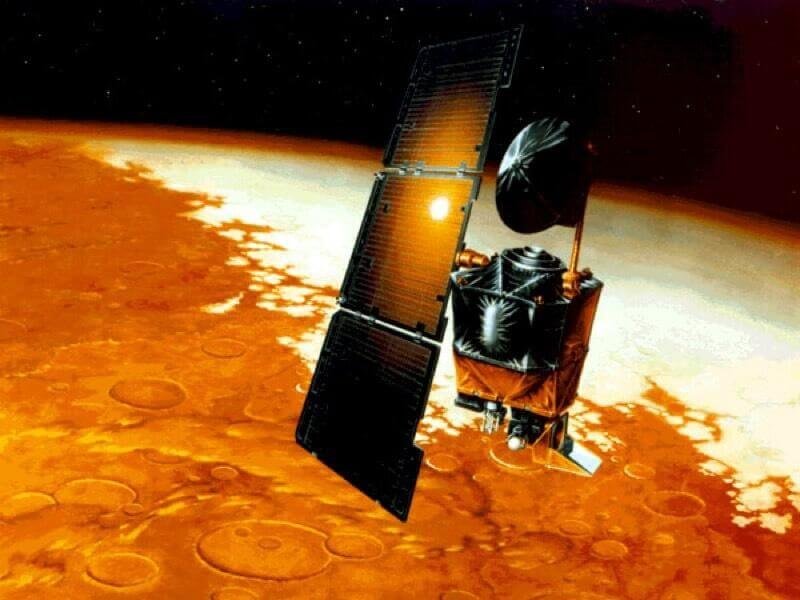You may know the Top 10 Greatest Inventions that Completely Changed the World. Accordingly, technology has revolutionized the way we live and work, making our lives easier and more efficient. But it has also had its share of disasters. Today from the World’s #1 Source of Research-Based Content, The Daily Top 10 is about to share with you the Top 10 Biggest Technological Disasters of All Time.

These disasters have had a significant impact on our lives. We’ll explore how these events have shaped our view of information security and the importance of taking preventative measures to protect our data. From lost data to billions of dollars in losses, these disasters will go down in history as some of the most catastrophic technological failures.
So, let’s take a look at the Top 10 Biggest Technological Disasters of All Time with The Daily Top 10.
What is the Biggest Technological Disaster of All Time?
Everything in today’s world is happening according to technology. The world has reached a point where nothing can be done without being updated with technological knowledge. This is a good situation on the one hand, but it cannot be said that there are no bad results. Technology Disasters can be taken as such a bad profile.

The information about each of these will give you a comprehensive knowledge of technology disasters. So, before we identify the Biggest Technological Disaster of All Time, let’s check out the rest of our Top 10 list first.
TOP 10: LA Airport Flights Grounded (2007)

LA Airport Flights Grounded is the 10th Biggest Technological Disaster of All Time. On August 11, 2007 (Saturday), a computer glitch at Los Angeles International Airport left thousands of passengers stranded on planes and stuck in terminals for hours. The computer outage that started at 2 pm continued for almost 10 hours and more than 17,000 people coming from abroad faced this delay.
That’s because the computer glitch prevented authorities from screening passengers arriving in the United States. Some flights were diverted and the agency issued a nationwide standoff for flights bound for airspace managed by the center. Other airports around the world also presented different messages about this.
TOP 9: Siemens & the Passport System (1999)

In the summer of 1999, the UK Passport Agency replaced the old system with a new computerized processing system. The aim was to provide more secure passports. But before introducing this system, they could not give their staff the necessary training and time to adapt to the new system.
According to ZD Net, that’s because they wanted to roll out the system to their Liverpool and Newport offices before the summer, which is their busiest time. Under these circumstances, the agency was unable to cope with the demand for new passports through the introduction of this system. They also failed to adequately estimate the time required to implement the system. Another aspect of this was the lack of a plan for how to deal with a problem.
TOP 8: Dell Battery Explosion (2006)

The 8th spot in our list of the Top 10 Biggest Technological Disasters of All Time is Dell Battery Explosions. A Dell notebook computer caught fire in Osaka, Japan, only harming the smoking conference table it sat on. But the incident was widely publicized through photos on the Internet, and Dell’s efforts to improve its image were severely damaged.
According to Tech Republic, the incident generated more publicity than any other company would normally receive. Dell, the world’s largest computer maker and Best and Most Recommended Laptop Brands in the World, has spent more than $100 million on a program aimed at improving its service, partly in response to negative comments on blogs and websites about the damage caused by the problem.
TOP 7: The Two-digit Year-2000 Problem (1999/2000)

According to Investopedia, Y2K is an acronym for “The Year 2000”. As the year changed from 1999 to 2000, great destruction was expected. As such, Y2K was widely used to refer to a widespread computer programming shortcut. Many computer programs allow only two digits for the year (eg, 99 instead of 99) instead of allowing four digits.1999).
As a result, when the date fell from “99” to “00” there was great fear that computers would become unworkable at the turn of the millennium. The change was expected to bring down computer system infrastructures such as banks and power plants. Although there was widespread opposition to the potential implications of this change, not much was done.
TOP 6: EDS and the Child Support Agency (2004)

According to ZD Net, incompatible software, mismanaged payments, and additional errors led to a u00a31.1 billion cost for the UK’s Child Support Agency (CSA), because of a poor system built for the agency by Electronic Data Systems (EDS). This disaster led to a backlog of 300,000 child support cases, with an additional 36,000 cases stuck in the system.
As mentioned in Information-age, 18 November 2004 A £456 million computer system developed for the UK government’s Child Support Agency (CSA) was “badly designed, badly tested and badly implemented”, according to an internal memo written by the company that built the system.
TOP 5: Mars Climate Observer Metric Problem (1999)

In 1999, the Mars Climate Orbiter was lost in space, at an estimated cost of $193 million. According to Tech Disasters, the problem stemmed from software developed by Lockheed Martin that converted a certain set of numbers into the wrong units.
The spacecraft engineers were unable to convert from English to metric measurements when exchanging vital data before launch. As a result, NASA lost its $193 million Mars Climate Orbiter. A naval team at the Jet Propulsion Laboratory used the metric system of millimeters and meters for its calculations. And the Martin astronauts who designed and built the spacecraft provided critical acceleration data in the English inch, foot, and pound system.
TOP 4: Airbus A380 Suffers from Incompatible Software Issues (2006)

According to Prezi, the Airbus A380 is a double-deck, wide-body four-engine jet airliner manufactured by Airbus. It is the world’s largest passenger airliner and many airports have upgraded their facilities to accommodate it because of its size.
The Airbus issue of 2006 highlighted a problem many companies can have with the software. In this case, the problem was caused by two halves of the same program, the CATIA software that is used to design and assemble one of the world’s largest aircraft, the Airbus A380.
TOP 3: The Explosion of the Ariane 5 (1996)

A software error on June 4, 1996 (Sunday) caused the explosion of the $7 billion Ariane rocket in Kourou, French Guiana. According to Users, the core issue was found to be a conversion error when the software attempted to convert a 64-bit floating point number to 16 bits.
About 40 seconds after takeoff, after traveling at an altitude of about 3700 meters, the plane deviated from its flight path, disintegrated, and exploded. This failure of the Ariane 501 was mainly due to the complete loss of direction and altitude information 37 seconds after starting the main engine ignition sequence (30 seconds after liftoff). This loss of information is due to specification and design errors in the inertial reference system software.
TOP 2: The AT&T Network Collapse (1990)

According to Users, at 2:25 pm on January 15th (Monday), network managers at AT&T’s Network Operations Center in Bedminster, N.J. began noticing an alarming number of red warning signals from various parts of their worldwide network. Within seconds, the giant 2-screen video array that graphically represented the network was crisscrossed with a tangle of red lines as a rapidly spreading malfunction leapfrogged from one computer-operated switching center to another.
The standard procedures the managers tried first failed to bring the network back up to speed and for nine hours, while engineers raced to stabilize the network, almost 50% of the calls placed through AT&T failed to go through. Until 11:30 pm, when network loads were low enough to allow the system to stabilize, AT&T alone lost more than $60 million in unconnected calls.
TOP 1: Soviet nuclear warning system false alarm(1983)

According to Wikipedia, on 26 September 1983 (Monday), during the Cold War, the nuclear early-warning radar of the Soviet Union reported the launch of one intercontinental ballistic missile with four more missiles behind it, from bases in the United States. These missile attack warnings were suspected to be false alarms by Stanislav Petrov, an officer of the Soviet Air Defence Forces on duty at the command center of the early-warning system.
He decided to wait for corroborating evidence of which none arrived rather than immediately relaying the warning up the chain of command. This decision is seen as having prevented a retaliatory nuclear attack against the United States and its NATO allies, which would likely have resulted in an escalation to a full-scale nuclear war. Investigation of the satellite warning system later determined that the system had indeed malfunctioned. Accordingly, the Soviet nuclear warning system false alarm is the Biggest Technological Disaster of All Time.
What are the Biggest Technological Disasters of All Time?
By studying the Biggest Technological Disasters above, it becomes clear how many disasters can be done to the world even in the case of a very small flaw in the technology. Therefore, to get an effective service in using technology, the existing knowledge about it must be unique.

Here are the Top 10 Biggest Technological Disasters of All Time:
- Soviet nuclear warning system false alarm
- The AT&T network collapse
- The explosion of the Ariane 5
- Airbus A380 suffers from incompatible software issues
- Mars Climate Observer metric problem
- EDS and the Child Support Agency
- The two-digit year 2000 problem
- Dell Battery Explosions
- Siemens and the passport system
- LA Airport flights grounded
A technological disaster is simply a problematic event caused by a malfunction of a technological structure or a human error in controlling or manipulating the technology. So, this is The Daily Top 10 Team subscribe to our Newsletter and get the latest news delivered straight to your inbox!





Top 10 Secret Locations in the World You Never Dare to Visit
Top 10 Best & Most Popular Featured Stories of December 2022
Top 10 Most Popular Cheese Recipes in the World (Updated)
Top 10 Worst Medications That Can Harm Your Kidneys
Top 10 Best Stocks to Buy for Investment in 2021
Top 10 Secret Websites That Will Make You Money Online (Updated)